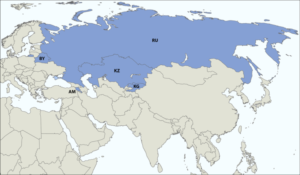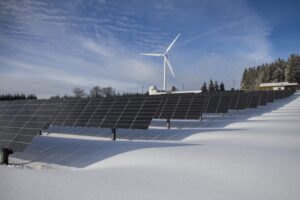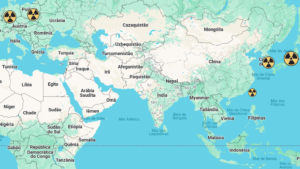- Climate change requires a rapid and effective energy source transition at the global level;
- The NIMBY movement has grown and undermined sustainable development projects;
- In this context, autocracies have advantages over democracies in terms of implementing energy transition projects.
The sustainable energy transition is, without a doubt, one of the world’s greatest concerns in search of the good of the planet, therefore, of the common benefit.
However, some city dwellers who present energy transition projects are worried about imposing wind turbines and solar panels that, they say, will ruin the bucolic nature of their cities and lower the prices of their homes.
It is noted that unlike opposition to fossil fuels due to concerns about pollution and contamination, resistance to clean energy is largely driven by aesthetics, real estate values and the possible risks of nuclear power plants close to their homes.
This has become a dilemma: citizens want projects built for the public good — such as affordable housing, rail, roads and renewable energy sources — but they don’t want to be anywhere near them.

What NIMBY “Not In My Backyard”
NIMBY is characterized by a group of residents who do not support the development projects proposed by the government of their cities, when they are close to their homes.
The central issue is that these residents are known for not supporting these projects only if they are close to their homes, as these projects often change the local aesthetics, the flow of new people in the region and even take some risks in the case of nuclear power plants.
Thus, there is even greater resistance from these people when it comes to the construction of nuclear power plants close to their neighborhoods, even if this benefits sustainable development.
This happens because despite the mandatory implementation of safety procedures in nuclear power plants, which are sources of clean energy, a nuclear accident could release dangerous levels of radiation over the area.
On the other hand, “nimbys” would support such development projects if they were built elsewhere, further away from their homes, and this way of thinking is also known as “nimbyism”.
Examples of sustainable or cleaner energy production projects that were canceled due to pressure from local residents
Local public acceptance is extremely important for locating and developing energy infrastructure. Strong opposition from “nimbyist” movements could delay the project’s approval, or even destroy it altogether.
In the case of the United States, the transition to renewable energy is of great importance for the economy and for the fight against global warming, however the nimbys threaten to make this transition much more difficult.
The most common reasons given by these groups against energy transition projects are:
1. Environmental concerns.
- Land conservation;
- Preservation of local wildlife;
2. Real estate.
- Possible new noises in the region;
- Decrease in the value of houses;
3. Tourism sector.
- Aesthetic change due to project installations;
- Possible decrease in local tourism;
4. Nuclear Power Plants.
- Risk of nuclear accident;
- Risk of radiation contamination;
In the United States, many projects have been blocked by these groups. One was a solar power plant near Las Vegas that would have been the largest in the country: the Battle Born Solar Project, situated on a rock formation called Mormon Mesa.
Another example was the vote taken to block new renewable installations near many rural desert communities in California, a state that has pledged to go carbon free by 2045.
In New York, lawmakers approved a climate change plan aimed at achieving an energy transition in the state by 2040. However, the proposed wind farms faced resistance from a group of Atwater citizens.
In Kansas, a wind farm proposed by NextEra Energy Inc. pending approval after residents raised concerns about their property values.
In Nebraska, a law was passed to make it easier for landowners to challenge in court the creation of new transmission lines for wind farms.
The last example among several cases is the Summit Lake Wind project, which faced resistance from residents, for fear that wind turbines would spoil the desert and discourage tourism. The local Indian Reservation has also raised concerns that the turbines would hamper their ability to fish and hunt in the area.
The difference between democracies and autocracies regarding the expansion of emission-free electricity production
There is a widespread belief that autocracies enjoy some long-term political stability, so they can implement projects to ensure consistent climate protection.
This advantage exists because autocratic governments can prescribe climate protection measures regardless of voters’ attitudes. While in democracies the policy
Climate change is sometimes forced into the background due to claims by some societal groups like the nimbys mentioned above.
Taking China as an example of autocracy, it is noted that rail transport plays a very important role in the country’s economic development. As a result, China’s train system experienced the evolution of locomotives.
With environmental protection in mind, there has been a significant reduction of emissions in Chinese railway transport, and the electrification of rails has become a general trend of social development, replacing fossil fuels with renewable energy.
Unlike authoritarian governments, which can impose top-down projects, democracies shy away from drastic climate protection policies. Due to their consensus-based decision-making processes, democracies struggle to ensure rapid and effective climate protection.
In the case of the United States, exemplified as a democracy, governments find it difficult to implement projects that somehow affect the lives – or sight – of citizens. Such threats, real and imagined, often fuel opposition to rail projects.
As an example, we can look at the government’s effort to expand the Amtrak Hiawatha service between Chicago and Milwaukee from seven to 10 round trips per day. But almost immediately, local opposition to a new bypass nearby stymied plans to expand the service.
Emily Badger published in the New York Times her theory in which she claims the expansion of “not in my backyard” to “not in my neighborhood” and outlines the growth of the conviction that “owning a piece of land gives owners the right to shape the world beyond its borders”, clearly affecting the energy transition.
Why the problem of NIMBY resistance in many democracies is relevant to the fight against climate change and even geopolitics
The problem with the NIMBY concept, aside from its constant opposition to development projects, is that some people seem to want their voices heard, while others stay out of the conversation altogether.
It is important to emphasize that topics such as wildlife preservation and conservation of open areas defended by nimbys are essential, and companies deploying technology must minimize these damages.
However, these factors should not impede the transition to green energy, as these attitudes exacerbate the problems they are concerned about.
Climate change has the potential to devastate natural habitats for animals and plants around the world, in addition to causing vast fires and floods that could certainly wreak havoc with real estate and tourism.
In this sense, autocratic governments like China benefit from the lack of nimbys, since projects are carried out in an authoritarian manner, regardless of popular approval. From this angle, the autocratic system is better and more effective than democracies, as they can implement climate policies more easily and without the interference of nimbys.
Thus, the autocratic governmental model ends up having a greater positive visibility around the world, and this point of view facilitates the understanding of the reasons why autocracies have grown more than democracies lately. However, in autocracies, individual freedoms – more demanded in democracies – are put in the background for the good of the whole.
In the case of countries strongly affected by nimbyism, instead of projecting themselves internationally, the countries most affected by climate change will be forced to focus their efforts on minimizing the catastrophes derived from global warming in their territory, as happened with Pakistan in 2022.
The country suffered the deadliest flood in the world and the worst in the country’s history, which followed a severe heat wave, both linked to climate change that killed more than 1,700 people and caused more than 15 billion dollars in economic and economic losses. over 14 billion in damages.
In addition, the expansion of clean energy takes longer than it should due to the nimbyist resistance – which should think more about the collective good instead of individualism – offering energy, economic and geopolitical advantages to autocratic countries, in this regard.
















Be First to Comment